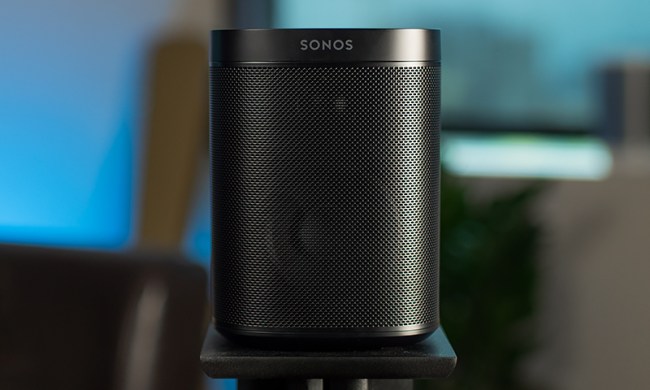“This speaker takes the Echo brand's audio quality to a whole new level.”
- Class-leading bass
- Slick and simple setup
- Dolby Atmos and 360 Reality Audio support
- Large, sprawling soundstage
- All the Alexa smarts
- Midrange occasionally muffled
- Brittle touch to lighter instruments
- 3D music still in limited supply
Amazon’s new Echo Studio smart speaker isn’t just good — at times, it’s downright fantastic. It’s also one of the few smart speakers you can buy that actually competes with the Sonos One. It does so, in part, by offering impressive features you simply won’t find in any other smart speaker on the market, not least of which is its surprising inclusion of Dolby Atmos support.
Even putting the Echo Studio in the same sentence as the One is proof of just how far Amazon has come in the last few years. With products like the Studio and the new Echo Buds, Amazon has proven it can no longer be left out of the audio conversation. Moving into the premium range has established its reputation as a serious contender for audiophiles.
In fact, with the Studio’s 3D soundstage, and a burgeoning new Amazon ecosystem to feed it, Amazon is starting its own conversation that other speaker makers are sure to join. In a way, it looks as though it’s Amazon who is setting the trend this time when it comes to premier smart speakers.
Roll out the barrel
With a large, rounded body and what looks like an oversized CD feeder cut through the base, the Echo Studio strikes a unique profile. It’s not off-putting by any means, and its acoustic fabric exterior offers some cachet, but it is larger than the Sonos One and Apple’s HomePod by a wide margin. The familiar Echo LED halo on the Studio’s topside is wide enough to actually fit an angel’s head.
There’s a good reason for the Studio’s size. It’s loaded with hardware, including dual 2-inch drivers at the sides, a 1-inch tweeter at the front, and a whopping 5.25-inch down-firing woofer to blast out bass. There’s one more 2-inch driver on board as well, this one facing upward to the ceiling to help create the hemispheric immersion for which 3D sound formats like Dolby Atmos and Sony’s new 360 Reality Audio system are prized. More on that later.
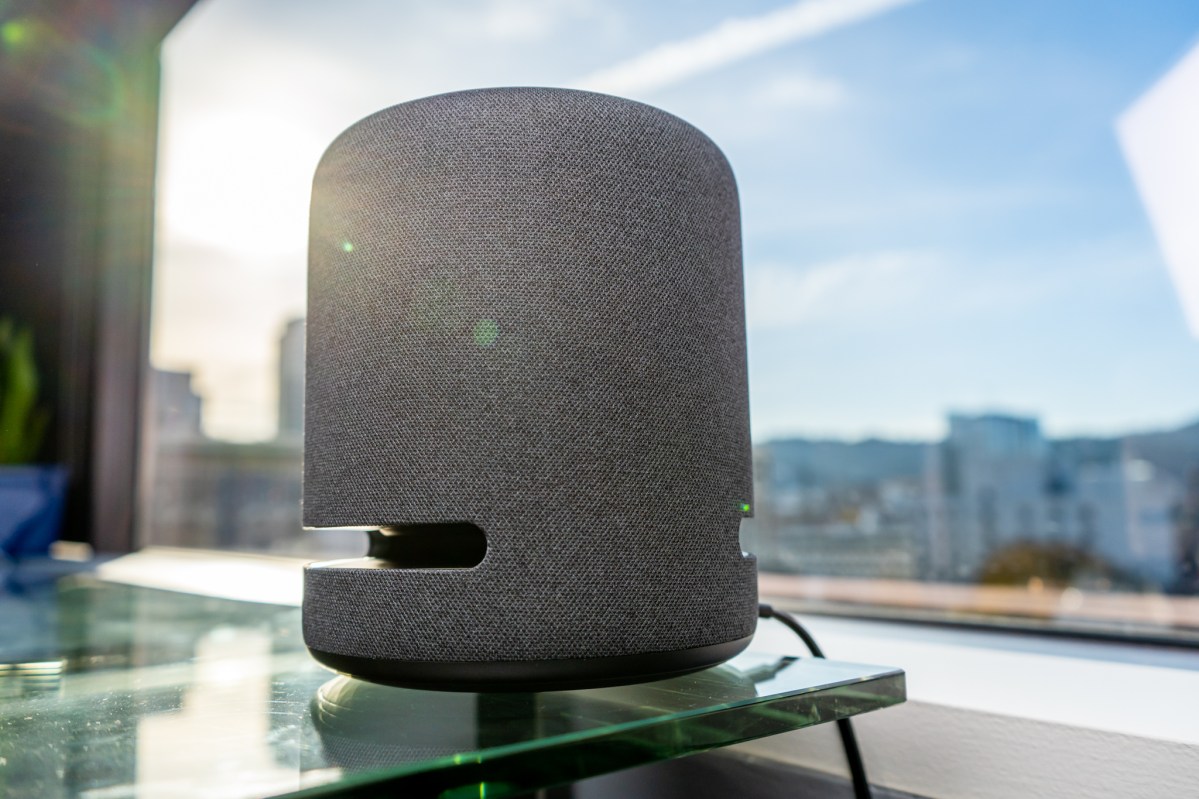
Along the Studio’s circular topside are control keys, including the Action button for manually calling Alexa (in case you don’t want to call the speaker with the “Alexa” command), volume keys, and my personal favorite, a mute key that turns that rainbow-blue Alexa LED Darth Vader red, assuring the speaker is not listening to you.
As someone with a natural aversion to allowing listening devices in my home, the red circlet is a comforting reminder that my conversations are safe. It’s also part of an ongoing effort by Amazon to restore faith in its discretion.
Like all Echo speakers, a microphone array within the cabinet allows for voice activation via the voice command “Alexa” (or a few other cues), while also allowing for acoustic calibration to adjust the speaker’s sound signature for wherever it’s placed.
Ready, set, stream
Sonos, long the undisputed king of simple speaker setup, has real competition. Setting up the Studio seriously couldn’t be easier. Sorry, Sonos. They learned it from watching you.
After installing the Alexa app on your phone, follow the on-screen instructions, and you’ll be streaming in no time. You can quickly add your preferred streaming service, including Spotify, Apple Music, Pandora, Tidal, and, of course, Amazon Music (among others).
Related Articles
It’s not just the setup that’s intuitive. Amazon’s Alexa app makes it easy to adjust basic audio preferences, control playback, and connect to other devices, from an Echo subwoofer to other Echo speakers for a multiroom speaker system.
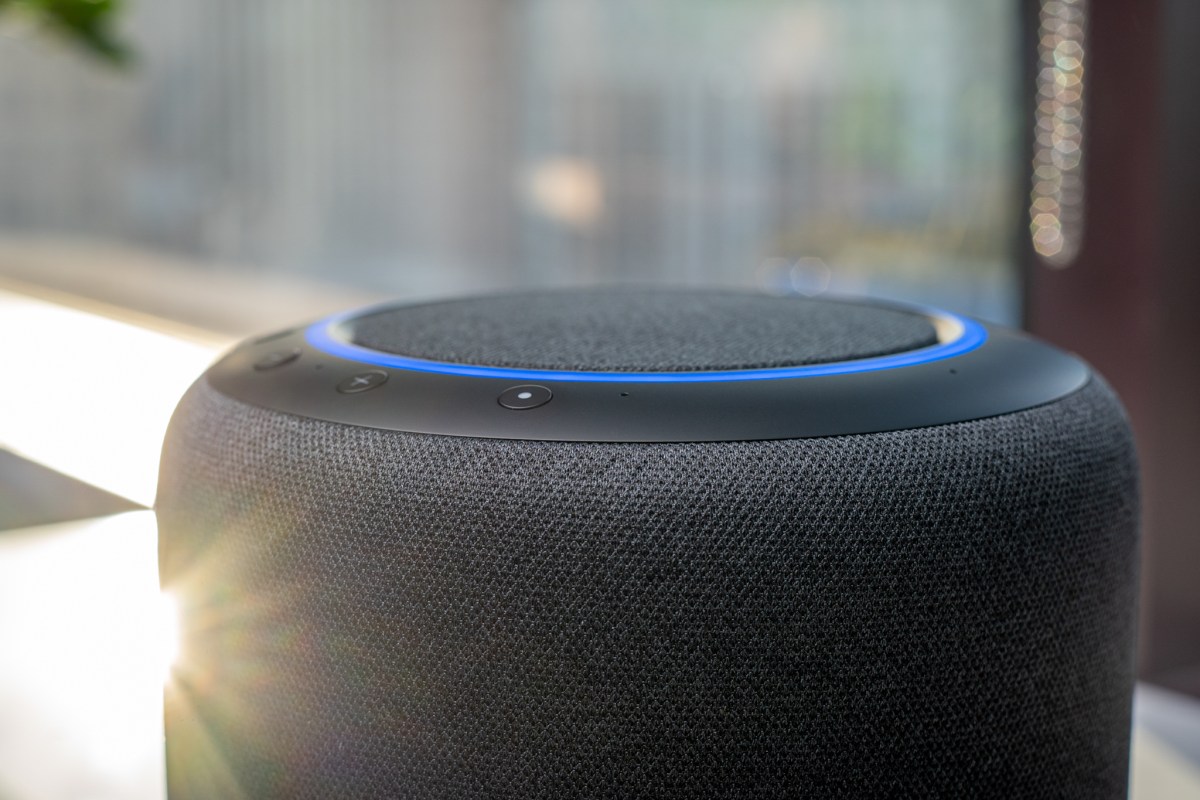
Again, the app feels a lot like Sonos, making it simple to use and, in my experience, much more stable and intuitive than Google Home.
There are more ways to connect than just Wi-Fi. The Echo Studio offers Bluetooth connection in a pinch, and at the back of the speaker, you’ll find a dual-use 3.5mm/Toslink Optical connection to connect to a TV or other device.
You can’t decode Dolby Atmos soundtracks over an optical connection, unfortunately, but there is a workaround. If you’ve got a newer Fire TV device, you can pair the Studio to it to stream Dolby Atmos content from select apps including Amazon Prime Video, Netflix, and even Tidal, which has recently added the ability to play its extensive collection of Dolby Atmos Music tracks, via devices like the Fire TV and Apple TV.
For now, it means you still can’t get Atmos to the speaker from the largest source at present — 4K Blu-rays — but pairing a set of Echo Studios nonetheless creates a very good Atmos-capable soundbar alternative for just $400 and Atmos streaming options are quickly increasing.
Alexa things
Before we get to the audio goodies, for those new to the smart speaker world, it’s worth talking about just how much Amazon’s Echo line, including the Studio, can do. From connecting and controlling a smart home system to checking the weather, shopping, and tons of other smart home skills, there’s plenty to explore. In fact, the Alexa app has a whole section of new and old skills to try.
These include controlling the speaker’s playback with your voice, which is simple and works better these days than even a year or two ago. The speaker had few stumbles when put through its paces, even with music blasting. Using Spotify, the Studio seemed to know what I wanted to listen to more often than not.
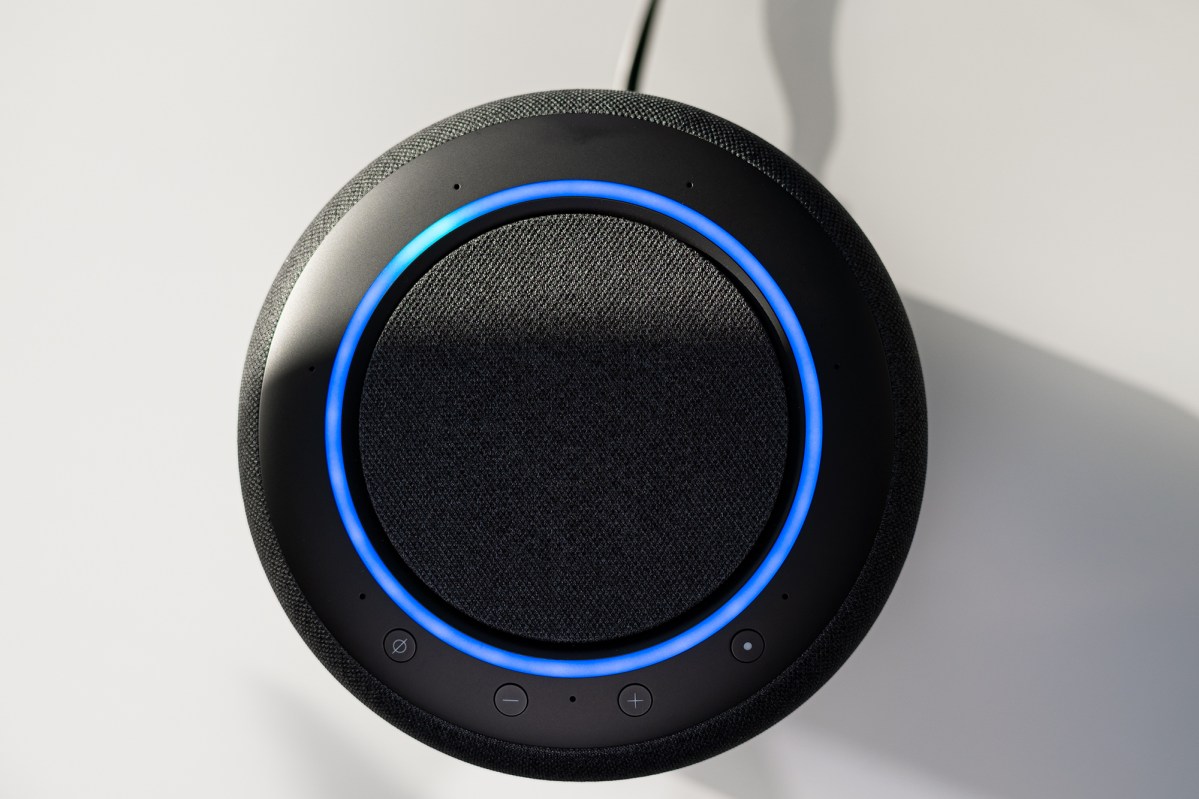
As part of the Echo family, the Studio can also do things most third-party Alexa speakers can’t, like making intercom calls throughout your home over your Echo collection. However, the Sonos One can speak both Alexa and Google.
Amazon Music steps up
You can’t talk about the Echo Studio without mentioning Amazon Music, as both parts are important to Amazon’s plans to cut into the lead of Spotify and Apple Music.
Earlier this fall, Amazon announced it was adding high-resolution music to its subscription music service for just $5 extra. That undercuts the price of all such competing services while adding something Apple and Spotify don’t have at all.
Just as important for our purposes, along with “millions” of tracks at up to 24bit/192kHz resolution, select songs are mixed (or remixed) in Dolby Atmos and 360 Reality Audio. Dolby and Sony appear to be going all-in on their new plans, too, adding major studio partnerships.
Chills at 360 degrees
The biggest question I had after Amazon revealed the Echo Studio in its most recent Alexa product extravaganza was simple. What does Dolby Atmos in a smart speaker even mean?
Most Atmos systems encircle you in a barrage of speakers to create the 360-degree audio effect, including at least two up-firing speakers to bounce sound off the ceiling. Even mentioning Atmos for a modest smart speaker seems audacious. But after tracking down the few tracks available on Amazon Music (which thankfully has a designated 360-audio playlist), I was impressed by what this speaker can do.
It gave me something I’ve never had from a $200 hunk of plastic. Chills.
The first song I pulled up was Elton John’s Rocket Man. At first, it was just a few slide effects billowing out like a sonic aura above the speaker. But as the song ramped up, the tune’s spacey synths began to expand from the top of the speaker and off the walls, eventually blooming into a cloud of swirling sound at the front of the room.
While the Studio couldn’t fully immerse me, it gave me something I’ve never had from a $200 hunk of plastic: Chills.
Stage versus signature
While the side- and up-firing drivers are paramount to the Studio’s 360 tricks, the speaker’s best asset for daily listening has to be it’s powerful, authoritative bass. Any large speaker can get boomy, with Google’s Max one of the prime examples. But the Studio’s bass isn’t just big. It’s clean, tight, and well-controlled.
The second song on Amazon’s 360 playlist was Ariana Grande’s 7 Rings, and while I’m not a Grande superfan, I was impressed by the taut, jackhammer-bass the Studio reproduced as the beat hit in the chorus. That hefty bass combined with the effervescent 360 soundstage to make for a brilliant ride throughout the playlist.
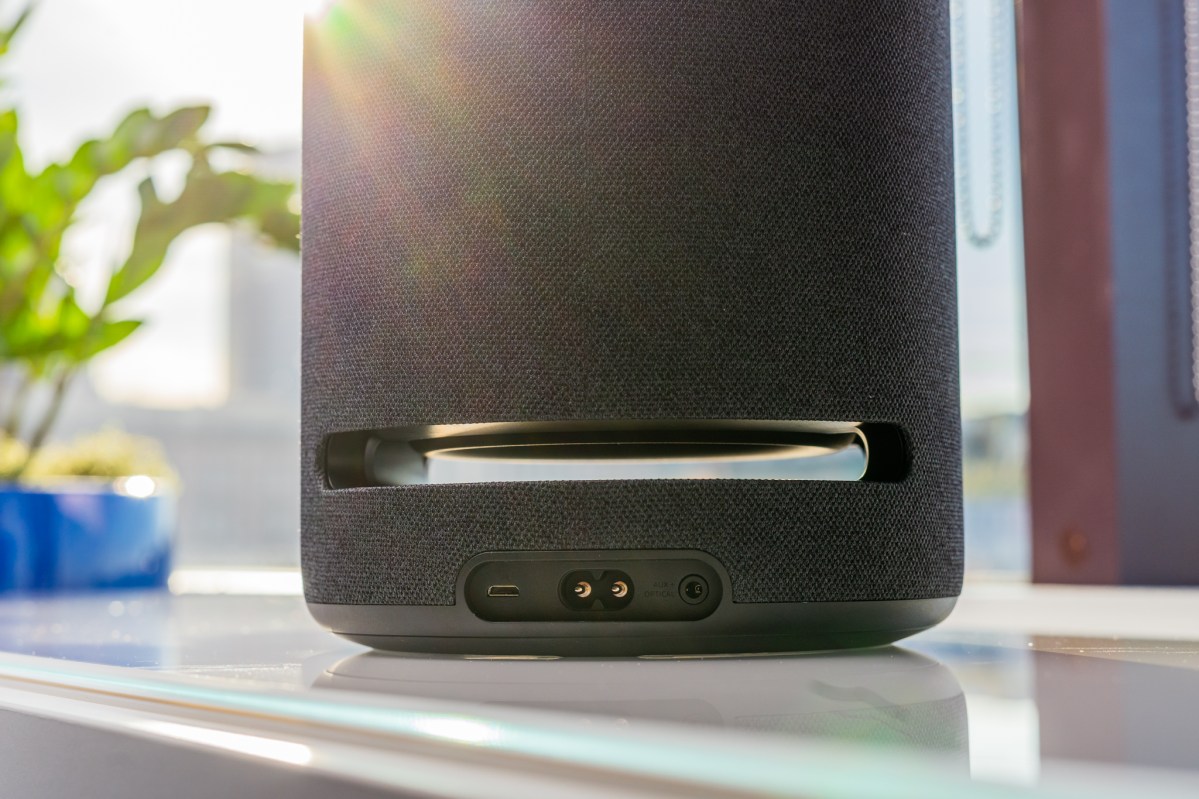
That said, the Studio isn’t perfect. Due to just the single tweeter up front, the speaker has a little trouble when it comes to delivering detail and clarity in the midrange, especially on vocals. It can also get tinny in the treble when fed lighter mixes.
In that regard, it gives up ground to the Sonos One, and Apple’s HomePod, too. That’s evident when you move away from 360 and high-resolution tracks. And let’s face it, most of us are stuck with compressed music when it comes to daily listening.
You can coax more midrange clarity by disengaging the Studio’s Stereo Spatial Enhancer, which really tends to suffocate the midrange on some tracks, but this also brightens the upper registers, occasionally unpleasantly. I found backing the treble down in the settings helped.
Regardless, the Studio’s sound signature takes a back seat to the smooth, rich, and detailed sound of the Sonos One. In addition, the Studio’s 3D effects are dependent on your living room setup (specifically your walls and ceiling), and 3D-mixes are limited at present. On the other hand, the Sonos One’s soundstage and bass are both more restrained and compact compared to the sprawling Studio.
The $400 Atmos soundbar alternative
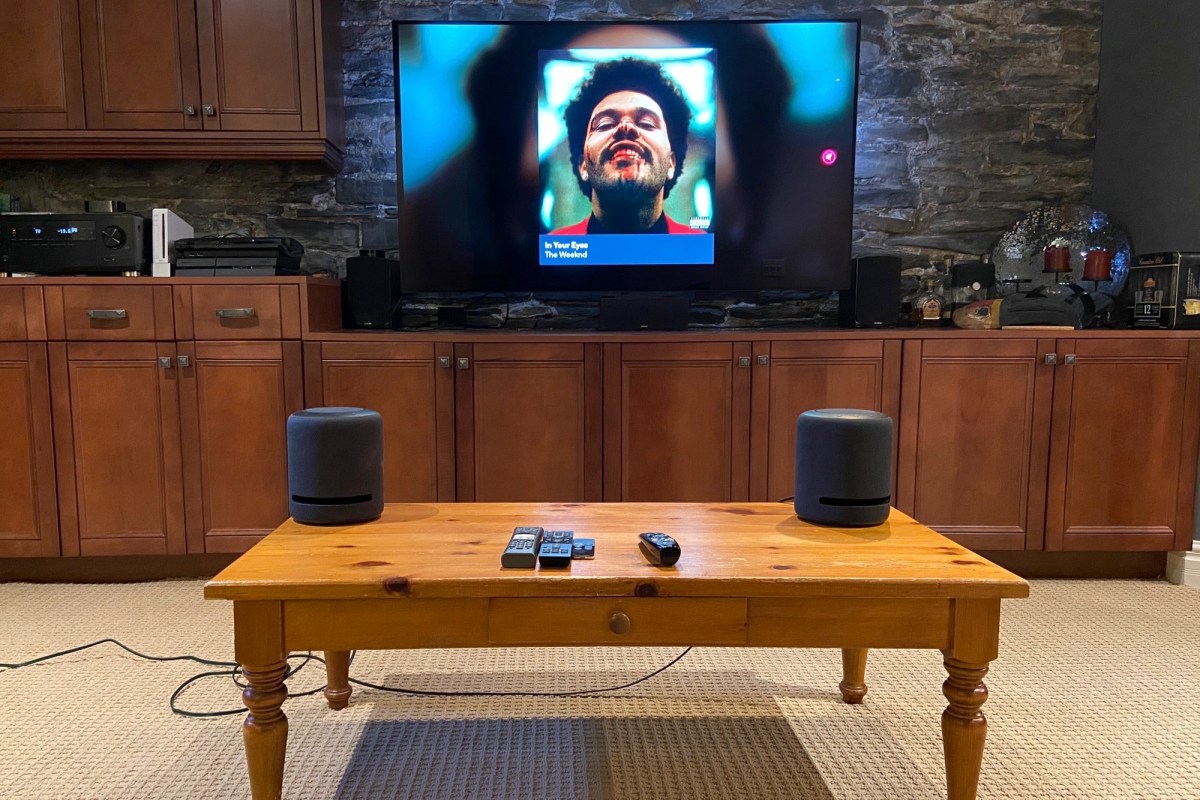
We recently had the opportunity to try out a stereo-paired set of Echo Studios connected to a Fire TV Cube to see how well they functioned as a soundbar substitute, and we were pleasantly surprised.
They’ll never take the place of a true Atmos-capable soundbar like the $800 Sonos Arc, or even a capable traditional soundbar like the $800 Bose Soundbar 700, but for half the price of these devices, they’re very good indeed.
But to get the most out of them, room position is key. The Studio’s circular driver arrangement means you need a clear path in pretty much every direction around the speakers, so bookshelves are definitely out.
For the best overall immersion with formats like Dolby Atmos, we found that placing the Echo Studios midway into the home theater space was the way to go, though obviously not the most practical solution.
When positioned this way, music and movie soundtracks are expansive, and thanks to the Echo Studio’s powerful bass, there’s enough low-end oomph that you likely won’t feel the need for a subwoofer.
Despite the Echo Studio’s Dolby Atmos music chops, Atmos for movies is good but not great. You get most of the virtual surround sound, but the overhead channels that are the hallmark of Atmos for movies don’t quite reach your ears in the same way as with dedicated Atmos soundbars. That’s not a surprise: The Echo Studio’s upward-firing midrange drivers points straight up, making the directional bouncing of sound off the ceiling and back to the listener more difficult.
Warranty
Amazon’s Echo Studio offers a one-year limited warranty, and you can purchase an extra year.
Try these new features
Alexa just keeps getting smarter, thanks to frequent updates that expand her toolkit. While there are some fundamental features you should definitely know about, there are new tricks that become available each month.
Wellness Tips
Working from home has its challenges, especially when it relates to health and wellness. Alexa can help by providing some useful wellness tips. To hear them, just say, “Alexa, what is my wellness tip of the day?”
Group conversation for all of your devices
Getting someone’s attention in another room can be challenging, especially if you have kids who routinely crank the music in their rooms. You can now conduct group conversations using Alexa’s Drop In feature, where you’ll be able to connect to other Echo devices. Essentially, it’s very similar to an intercom system.
Get your reminders on all devices
You can always stay up-to-date with your reminders thanks to a new feature that will play them across all of your Alexa devices. In order to enable this, you need to select the Announce on all devices under Settings > Reminders within the Alexa app.
Daily Music Pick
Tired of the same playlist or carousel of songs playing on your Alexa device? Then check out the daily music pick feature that will provide daily music recommendations from Amazon Music. All you need to say is “Alexa, play the Daily Music Pick” and a new artist will automatically choose a song, album, or playlist.
Our take
The best smart speaker Amazon has ever made delivers on its promise, combining with Amazon Music to offer a new way to listen. Add in best-in-class bass and solid sound across the board, and the Echo Studio is one of the most enticing new smart speakers on the market.
Is there a better alternative?
For an Amazon speaker, no. And if you’re looking to dip your toes into the world of Atmos Music, this is also your best speaker choice. It’s also priced at $200. If you’re looking for a more well-rounded, everyday speaker with the versatility of both Google and Alexa (and a more balanced sound signature), the Sonos One is the obvious alternative.
While there hasn’t been a drop to its price since releasing last fall, it’s worth pointing out that Amazon does currently offer a bundle that packages in a free Philips Hue Bulb.
How long will it last?
The speaker appears to be well-built, and it’s also got advanced decoding for 3D audio formats that are just beginning to take shape. If anything, it’s a little ahead of its time.
Should you buy it?
Yes. If you’re looking for the best Amazon Alexa smart speaker you can buy — and especially if you’re excited to dive into the latest musical frontier — the Echo Studio is an easy choice.



